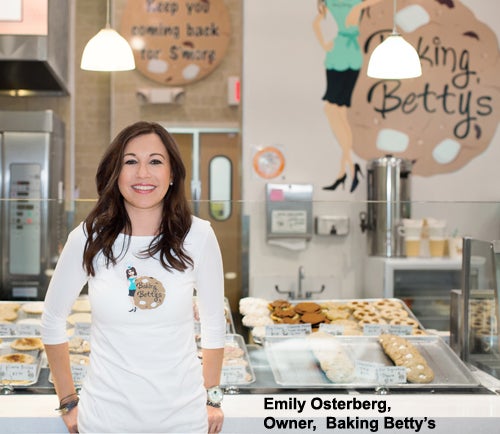 Square may be a unicorn – but it’s got its eye on the little guy.
Square may be a unicorn – but it’s got its eye on the little guy.
“We’re leveling the playing field,” said Kevin Burke, former Visa CMO and now head of acquisition at Square, which completed its long-awaited IPO in mid-November. “We’re helping small businesses close the loop.”
Integrating online and offline has long been the white whale of retail. Square approaches the problem through payments, enabling small businesses to accept credit cards, effectively turning their phones and tablets into point-of-sale systems. Contactless payments launched right before Thanksgiving.
Using payments as the jumping-off point, Square’s offering now extends to small business financing, invoices, ecommerce setup, payroll and a full suite of marketing and customer engagement tools.
“We have payments at our core, but we’re also looking to provide a well-rounded toolkit that helps SMBs drive their business forward,” Burke said.
Although Square generates approximately 95% of its revenue from payments and POS transactions, the plan is to use its product extensions – financial services and marketing services – to diversify revenue and accelerate growth.
Will It Work?
There are 30 million small businesses in the US alone, according to the US Small Business Administration, with millions entering the scene each year. The Kauffman Index, which tracks startup activity, estimated that 530,000 entrepreneurs start new businesses every month.
The potential is there, said Greg Sterling, VP of strategy and insights at Local Search Association.
“Square has a fairly good chance of penetrating the small business market with their add-on marketing services mainly because it’s a logical extension of their point-of-sale service,” Sterling said. “Small businesses also want to deal with fewer rather than more vendors. They’d rather work with someone they know than go to the marketplace to find someone else.”
That said, SMBs are often casting around for solutions. They’re busy, they need results fast and a lot of the marketing solutions out there sound quite similar to each other. Success boils down to trust, and trust creates stickiness.
 “They’ve got a lot of different companies pitching them and they’re generally confused and frustrated by all the noise they encounter – but if two companies are offering the same kind of marketing services and one of them is also providing a core operational function for the business, they’ll tend to work with the latter,” Sterling said. “The core proposition is trust, though. If Square has successfully created that in its customers, then it’s in a really strong position.”
“They’ve got a lot of different companies pitching them and they’re generally confused and frustrated by all the noise they encounter – but if two companies are offering the same kind of marketing services and one of them is also providing a core operational function for the business, they’ll tend to work with the latter,” Sterling said. “The core proposition is trust, though. If Square has successfully created that in its customers, then it’s in a really strong position.”
Square The Circle
Nearly every large business uses some kind of CRM software, but relationship management is even more important for an SMB, where margins are tight and customer retention can make or break the bottom line.
“Obviously, the most important thing we need to do is to reach our customer,” said Square customer Emily Osterberg, owner of Baking Betty’s, a gourmet cookie shop in Newport Beach, Calif. “You want them to come into your store. But once you’ve done that, you need to manage that relationship and you need to bring them back.”
And that’s about communication that bridges online to offline and back again.
 When customers use their credit card at a Square POS for the first time, the system immediately captures their email addresses, which businesses can use to build their list and send out personalized messages segmented by customer type – loyal, casual or lapsed.
When customers use their credit card at a Square POS for the first time, the system immediately captures their email addresses, which businesses can use to build their list and send out personalized messages segmented by customer type – loyal, casual or lapsed.
“We just weren’t getting enough email addresses for that before and collecting them was such a manual process,” said Osterberg, who had experimented in the past with a number of different marketing platforms, including MailChimp and Constant Contact, before opting for Square.
When a customer opens an email and returns to the store (and uses the same credit card to complete a purchase), the system can tie the marketing communication that brought them there to a specific sale and a particular person.
“These promotions are bringing people into the store, and we can see tracking in the back end so we know how many people came in and redeemed,” Osterberg said. “We’re seeing it come pretty much full circle. The proof is in the pudding for me.”
According to Square, roughly every dollar spent on promos nets $20 in return sales among its food-related businesses, and the open rate on messages sent to contacts collected via Square garner around twice as many opens and 10 times the redemption rate as email addresses that were collected by merchants manually.
“It brings all of the business functions together so I can see everything in one spot,” Osterberg said. “It just makes my life a lot easier.”
Feedback Loop
Also housed within Square’s marketing offering is a reimagining of the receipt. Rather than paper receipts or just emailing a digital copy, Square uses the receipt as a catalyst for dialogue with the customer.
 Following a transaction, users receive a digital receipt with a smiley face and a sad face displayed prominently at the top. Customers are encouraged to leave feedback about their in-store experience by tapping on one of the faces to rate things like service, wait time and quality.
Following a transaction, users receive a digital receipt with a smiley face and a sad face displayed prominently at the top. Customers are encouraged to leave feedback about their in-store experience by tapping on one of the faces to rate things like service, wait time and quality.
Say a customer has a bad experience – cold coffee, long line. The business can respond with a coupon or deliver an immediate refund. For her part, Osterberg also leverages Feedback to help motivate and educate her employees, using real-life examples to give kudos or explain how it could be done better the next time.
Square sees more than 1.5 million monthly feedback communications sent between buyers and sellers through digital receipts, according to the company’s S-1.
The company also provides its businesses with the ability to create a loyalty program and reward customers with digital punches toward discounts and free merchandise. Every time users swipe their card, the screen displays how far along they are toward earning their next reward.
“Some of my clients actually print it out and bring it to me, but I tell them, ‘All you have to do is use the same credit card,” joked hairstylist and Square client Rona Bunch, owner of the BAB & Rojo salon in Jacksonville, Fla. “They get a big kick out of seeing their rewards pop up on the screen.”
Rounding out its offering, Square has an integration with Facebook so that merchants can automatically share their promotions in order to spread the word beyond existing customers, a feature that particularly appeals to Bunch.
“Talking to existing customers is great,” she said, “but I also need to bring in new people.”
Size Doesn’t Matter
 Size aside, small businesses have the same needs as “any multinational conglomerate,” said Square’s Burke, which means they “should have access to the same tools, technology and resources as any enterprise or larger business could have.”
Size aside, small businesses have the same needs as “any multinational conglomerate,” said Square’s Burke, which means they “should have access to the same tools, technology and resources as any enterprise or larger business could have.”
Merchandising and A/B testing are good examples. The scale may be smaller for an SMB, but the stakes are just as high. Merchants have access to a back-end dashboard that tracks their sales data over time and surfaces it back to them so they can make concrete decisions based on data.
If blueberry muffins are the most popular item on Mondays and Thursdays, it probably makes sense to have more of them in stock on those days. Did moving the display case to the other side of the shop have an impact on sales one week versus the next? This month’s sales were better year over year – what specific sales made the difference?
It all traces back to the POS system.
In its S-1, Square related the story of the second seller it ever signed up for its service back in 2009 – Sightglass Coffee, an independent coffee company owned by brothers Jerad and Justin Morrison that now has multiple locations in San Francisco.
Back then, the siblings were first getting started with a coffee cart. They wanted to accept credit card payments, but at the time they were writing down orders on paper, ringing them up with a calculator and collecting cash. It was an unwieldy process.
“Unable to track the cash payments they received or the number of items sold, they were forced to stitch together disparate systems and processes, including counting cups to estimate cappuccinos they had sold,” the S-1 recounted. “At Sightglass, we realized the power of the point-of-sale and the kinds of analytics we could deliver.”















